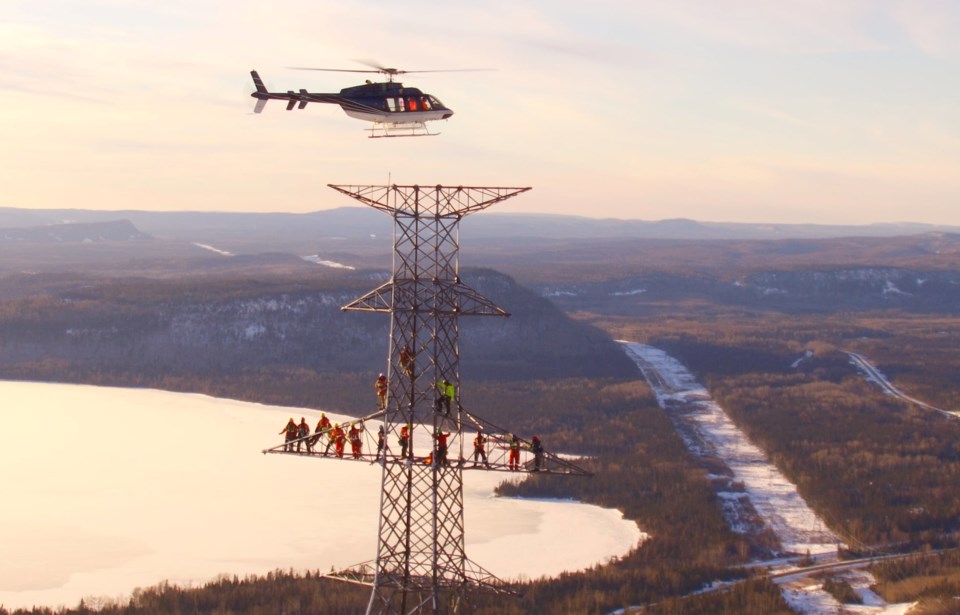WAWA — After three years of delays involving a global pandemic and forest fires, the East-West Tie Transmission Line is now complete.
The service is ready to provide 230 kilovolts of reliable energy to Northwestern Ontario between Wawa and Thunder Bay. The 450-kilometre transmission line will relieve the longstanding constraints on the electricity in the region.
Costing more than $700 million to complete, the project was erected through a coalition involving NextBridge, in partnership with NextEra Energy, Enbridge, and OMERS.
It's hoped this infrastructure project will be seen as a regional asset in economic opportunities in the mining industry in the region, which will have access to 450 megawatts of power, allowing communities and businesses to take full advantage of 94 per cent clean electricity.
“The East-West Tie will meet the energy needs of industrial sectors for many years to come,” said Ontario Energy Minister of Todd Smith, who referred to the growing battery manufacturing sectors in southern Ontario.
Future mines in Northern Ontario will be crucial in providing minerals to manufacture batteries for electric vehicles.
"These kinds of people are going to need lithium, they’re going to need cobalt, they are going to need all of those critical minerals that are available through the mining here in Northern Ontario," said Smith.
Northern Development Minister Greg Rickford states that the East-West Tie will strengthen ties with Indigenous business helping to “make these projects a reality and it will lead to long-term economic opportunities in the region.”
The mining sector in northwestern Ontario won't be the only beneficiary of the transmission line. The communities connected to the line will be provided with affordable energy and jobs.
Project director Jennifer Tidmarsh explained, “years of collaboration with Indigenous communities, countless stakeholders and right-of-way communities from Thunder Bay to Wawa were required to get us here today.”
The East-West Tie is hailed as necessary step in building partnership with Indigenous communities in the area. In partnership with of Bamkushwada, a group comprised of the surrounding indigenous communities, and Supercom Industries, an Indigenous-owned project hiring firm, has ensured 200 Indigenous workers (60 per cent of the construction workforce) has contributed four-million-person hours of labour.
“Now that it’s come into service, the East-West Tie Line will support a new ear of economic growth and opportunity for the region. This is good news for families and business in Northern Ontario and I applaud the Government of Ontario and the project partners for the bold action in bringing this project to fruition with a focus on Indigenous inclusion and participation,” said Chief Peter Collins of Fort Williams First Nation about the project.
— TBNewswatch




